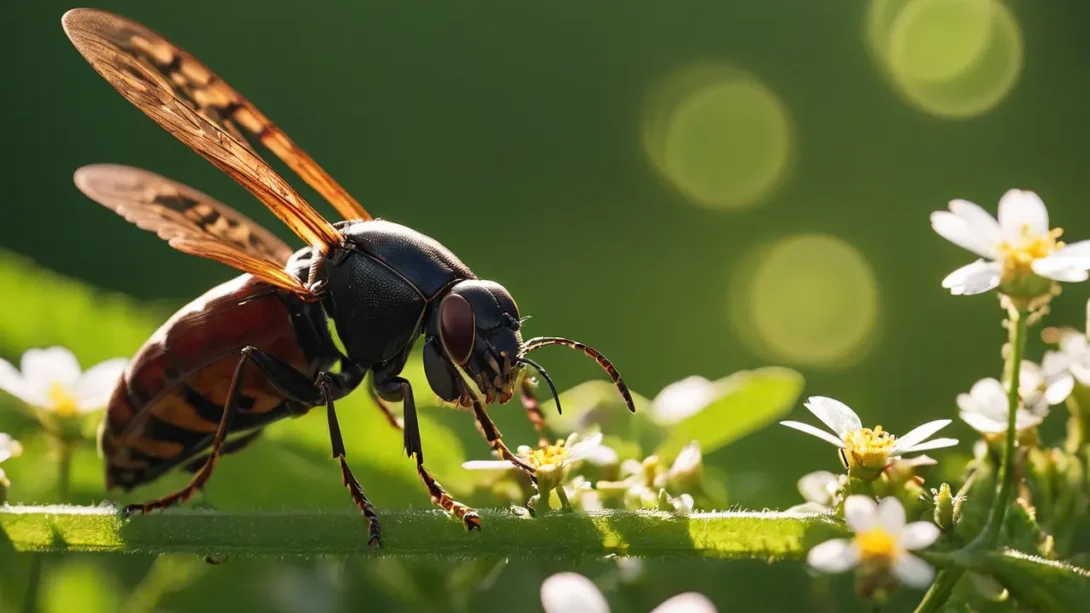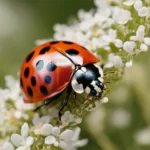Permethrin is a synthetic chemical widely revered in the gardening and agricultural sectors for its potent insecticidal properties. Derived from the chrysanthemum flower, this compound plays a pivotal role in safeguarding plants from the ravages of insect pests. Its broad-spectrum activity against a variety of insects makes it an indispensable tool for gardeners and farmers alike, aiming to achieve healthy, thriving plantations free from pest-related damages. This article delves into the myriad of insects permethrin is known to combat, offering a glimpse into its mechanism of action and the safety considerations surrounding its use.
Permethrin
Permethrin belongs to the class of chemicals known as pyrethroids, synthetic versions of pyrethrins, which are naturally occurring compounds found in chrysanthemum flowers. It operates by disrupting the nervous system of insects, leading to paralysis and eventual death. This mode of action is highly effective against a broad array of insect pests, making permethrin a go-to choice for pest control in both domestic gardens and commercial agricultural settings. Available in various forms, including liquid concentrates, powders, and impregnated materials, permethrin’s versatility further adds to its appeal. However, its application requires adherence to specific guidelines to maximize efficacy and minimize potential harm to non-target organisms.
Permethrin’s mechanism of action is fascinating; it binds to sodium channels in the nerve cells of insects, prolonging their activation, which causes repeated nerve firings, paralysis, and death. This selective toxicity is more pronounced in insects than in mammals, making it safer for use in environments frequented by humans and pets, provided it is used according to label instructions. Despite its synthetic nature, permethrin’s foundation in natural insecticidal compounds bridges traditional and modern pest control methodologies, offering a powerful defense against insect invasions with a nod to the natural world.
Broad Spectrum of Target Insects
Permethrin’s appeal to gardeners and agriculturists largely stems from its effectiveness against a wide range of insect pests. This broad-spectrum capacity ensures that a single application can target multiple pest species, simplifying pest management strategies and enhancing plant protection.
Aphids
Among the myriad pests permethrin targets, aphids are perhaps the most notorious for gardeners. These small, sap-sucking insects can cause significant damage to plants by transmitting diseases and promoting the growth of sooty mold. Permethrin acts swiftly to eliminate aphid populations, thereby protecting plants from the myriad issues these pests introduce. By disrupting the aphids’ nervous systems, permethrin ensures that plants remain healthy and free from the stress and disease aphids can bring.
Mosquitoes
Mosquitoes are not only a nuisance for gardeners but can also pose health risks through the transmission of diseases. Permethrin is highly effective in controlling mosquito populations, reducing their numbers in garden areas and thereby enhancing the outdoor experience for everyone. Its application in garden spaces can significantly decrease the likelihood of mosquito-borne illnesses and improve the overall quality of life in and around these green spaces.
Ticks
Ticks, while less common garden pests, pose serious health risks through the transmission of diseases such as Lyme disease. Permethrin’s efficacy extends to these dangerous pests, offering a protective barrier in gardens and surrounding areas. By treating garden foliage and grassy areas with permethrin, gardeners can reduce tick populations and minimize the risk of tick-borne diseases, ensuring a safer environment for family and pets.
Caterpillars and Other Lepidopteran Pests
Caterpillars and other larvae of the Lepidoptera order can cause extensive damage to a wide variety of plants by feeding on leaves and stems. Permethrin effectively halts their destructive feeding habits, safeguarding the health and aesthetic value of garden plants. The insecticide’s action on these pests helps maintain the balance within garden ecosystems, allowing for the flourishing of both cultivated and native plant species.
Beetles
Beetles, such as the Japanese beetle, are another group of pests targeted by permethrin. These insects can decimate garden plants, flowers, and crops, leaving behind a trail of destruction. The application of permethrin helps control beetle populations, preserving the beauty and yield of gardens and agricultural fields. Its ability to combat these hard-shelled pests further underscores permethrin’s role as a versatile and effective insecticidal agent in integrated pest management strategies.
Safety and Environmental Considerations
While permethrin’s efficacy in pest control is well-documented, its use comes with important safety and environmental considerations. For humans and pets, permethrin is generally safe when used according to label directions. However, it is toxic to fish and aquatic invertebrates, necessitating careful application away from bodies of water and proper disposal of any excess product. Beneficial insects, such as bees and butterflies, can also be adversely affected by permethrin, highlighting the need for targeted application during times when these pollinators are less active, typically during early morning or late evening.
The environmental persistence of permethrin, though relatively low compared to other pesticides, calls for mindful usage. It degrades in soil and water primarily through microbial activity, with a half-life varying from days to weeks depending on environmental conditions. This degradation helps minimize long-term environmental impacts, but the potential for bioaccumulation in aquatic ecosystems underscores the importance of judicious application in agricultural and residential settings.
Conclusion
Permethrin stands out as a cornerstone in integrated pest management, offering a powerful tool against a wide spectrum of insect pests. Its ability to target everything from aphids and mosquitoes to ticks and beetles makes it a valuable asset for gardeners and farmers aiming to protect their plants and enhance productivity. However, the true value of permethrin lies in its use as part of a broader pest management strategy that considers the health of the environment, beneficial organisms, and human safety. By adhering to label instructions and applying permethrin judiciously, its benefits can be maximized while mitigating potential risks. Responsible use, coupled with an understanding of its broad-spectrum efficacy, ensures that permethrin remains an effective and sustainable option for pest control in gardens and agricultural landscapes alike.



